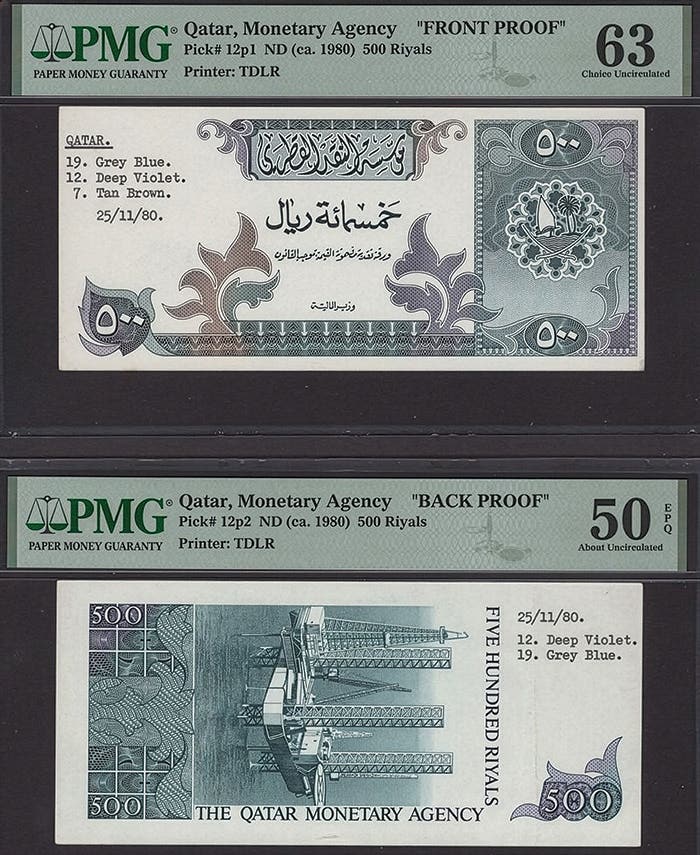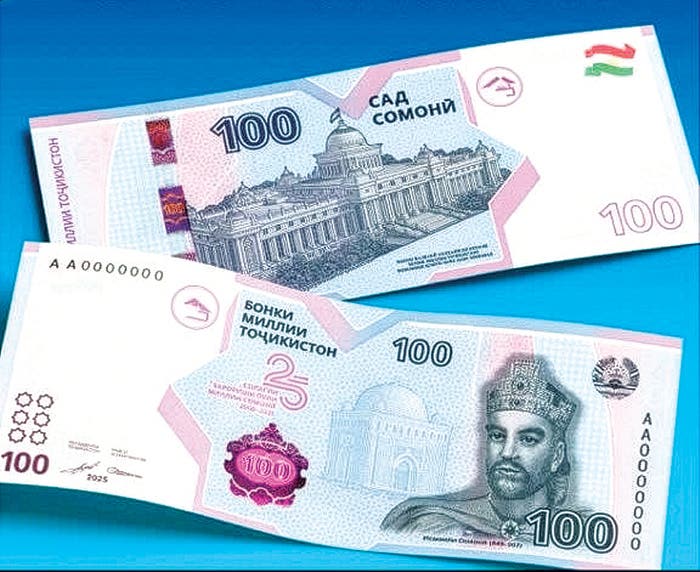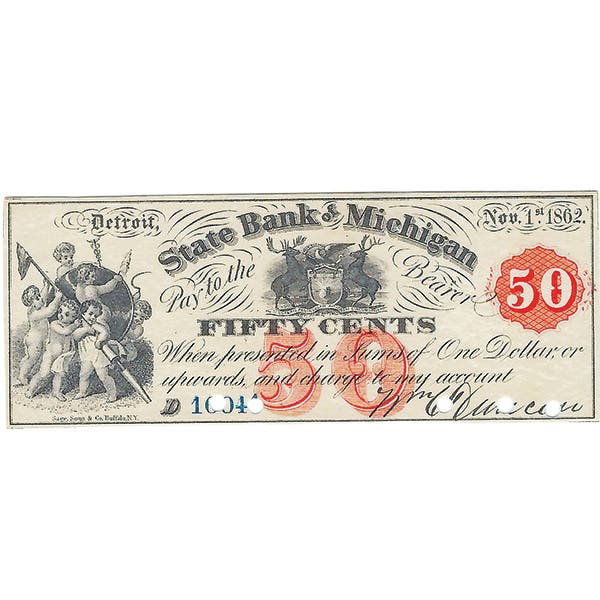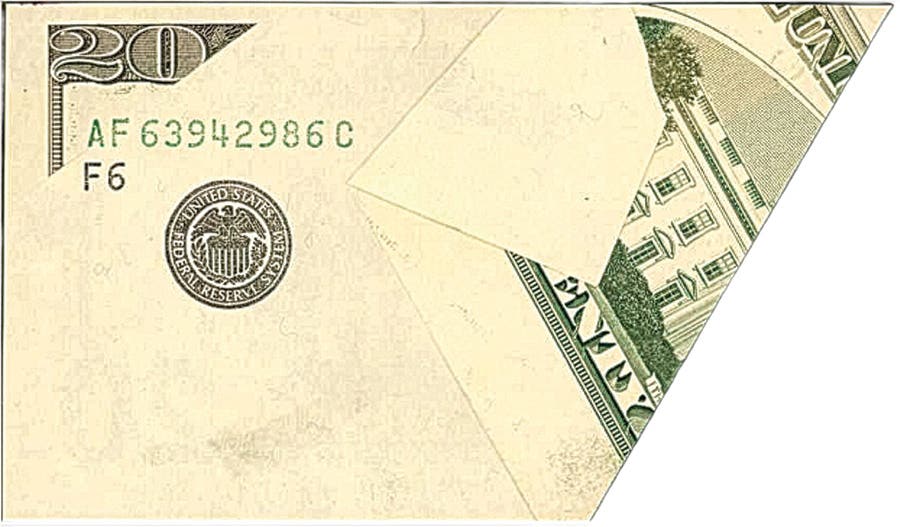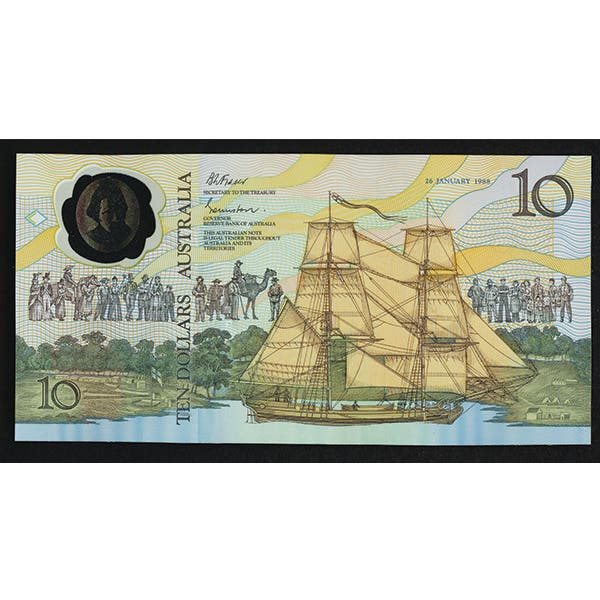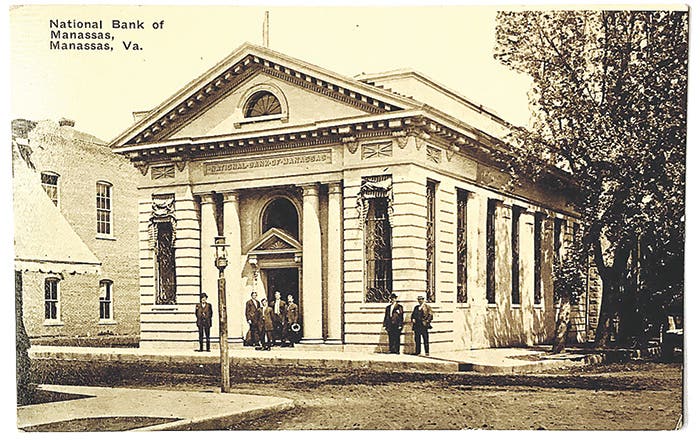$10 18-Subject Intermediate Size Plate Serial Number 1597 Backs
Few people know about the intermediate-size back plate serial number 1597 on $10 1950A, B, and C FRNs because little has been written about them.
This article focuses on intermediate-size back plate serial number 1597 on $10 1950A, B, and C FRNs, a variety that few people know about because little has been written about it.
Decades ago, someone pointed out 1597 on the back of a $10 Federal Reserve note from the 1950 series. Here is what I learned about it.
The notes bearing the variety were printed from an 18-subject flat plate. Those were the last plates used to print notes on wetted paper. Consequently, the notes bearing the variety have terrific eye appeal characterized by crisp inks and paper that possesses a distinctive crackling texture and feel when new.
Many collectors of Small Size notes refer to notes printed on wetted paper as coming from the classic small note era; specifically, notes printed from 12- and 18-subject flat plates used for the 1928 through 1953 series.
I watched for the proof for 1597 among the 18-subject proofs as we were sorting the proofs at the Smithsonian. When it appeared, I saw that the plate was certified for use on Aug. 20, 1954, and all 18 subjects had intermediate-size plate serial numbers. The plate was made a little too late to have appeared on Series of 1950 Clark-Snyder notes.
The plate number in the plate margin was 5125, which is from a running set of numbers assigned to Small Size backs of the various denominations of that vintage. In contrast, plate serial numbers differ from plate numbers in that they thread only through the plates of the same denomination and are the little numbers found within the notes.
I felt obligated to get the plate usage data from the appropriate plate history ledger in the National Archives at College Park, Md., in order to properly flesh out the story. That task flummoxed me. I never found the 18-subject ledgers for $10 backs with plate serial numbers as high as 1597. Consequently, I delayed writing up the variety until now.
Being certified in 1954 and then used for the 1950A, B, and C FRN notes reveals that the plate enjoyed a long life. Of course, it was used to produce notes for any number of Federal Reserve districts in each of those series, including star notes. I don’t know of anyone who has attempted to catalog the possible varieties.
I found only one star note with a l597 back, a Series of 1950A with serial B17398034*. I let it go to Logan Talks, who for years maintained a census of scarce and rare Small Size notes. He always appreciated plate number varieties on replacement notes. As I was writing this article, I remembered that note, so I contacted him to see if he recorded the serial number. I’ll be darned if he didn’t still have the note for you to see.
The real challenge for me was to find the variety on a $10 1953 series silver certificate because 1597 had to have been used on some silvers. I have looked at a slew of 1953 $10 silvers over the years and never found one. They have to be rare based on my frustrated experience,
Small Size U.S. variety collecting has enjoyed a huge surge in popularity during the past several years. One area that has received attention is notes with wrong-size plate serial numbers. They certainly add to enjoyment for those who have the patience to pursue them. Some turn out to be rarities.
Three very popular and avidly collected varies that have come down the pike are these: (1) $5 Series of 1934B New York Federal Reserve notes from face plate 212 with intermediate size plate serial numbers on all subjects, (2) intermediate backs that occurred on the right half of 32-subject back plate 1821 used to print $1 1974 FRNs, (3) $1 1988A FRN face 106 made for use in Fort Worth that carried a large plate number otherwise reserved exclusively for the backs printed at Fort Worth.
One stellar unreported possibility is a $5 1934B FRN New York with intermediate face 212 mated with micro back 637. This potential find ranks at the absolute top of my list as the ultimate small note variety. Plate 637 was in use when 212 faces were being printed. Someone is going to score big time by finding one.
Plate serial numbers are added to printing plates by engravers who etch the numbers into the surface of the plates. The area where the numbers occur on a plate is coated with a resin. The engraver uses a pantograph etching machine to scribe the number through the resin onto the plate. The pantograph machine has a template with numbers that the engraver traces and the machine mechanically reduces them to the desired size as it scribes several subjects onto the plate at a time. This process produces a trace of the number through the resin onto the plate surface. Next, the engraver puts a drop of acid on the resin, and the acid etches the number to the desired depth into the surface of the plate so it can hold ink. The acid etching process is sped up by placing an electrode onto the drop of acid and applying a current through it.
The pantograph machines have an adjustment that governs the size of the plate serial numbers. Once in a great while, the operators dial in the wrong setting.
You may also like:




